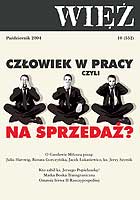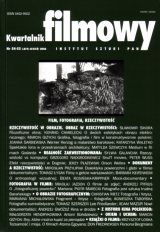Author(s): Adam Mazur / Language(s): Polish
Issue: 54-55/2006
Among the trends in the Polish art of the beginning of the century - besides young painting and the irony-using “post-critical” art – one can discern the trend, based on the recording of the images of reality, of the new documentalists. Fitting the context of contemporary art, the new documentalists consciously part with the recently dominant tradition of the artistic act in photography as a “visual gesture.” In other words, new document is not about creating alternative, separate spaces. Instead of creating an aesthetic asylum, the artist uses the camera to confront the viewer with the images of the real. The words of Jerzy Busza, written during the martial law when reality yet again proved a challenge for art, sound to-the-point even today and may be addressed to the new documentalists (including A. Bedyńska, A. Brzeżańska, A. Grzeszykowska J. Smaga, Z. Krajewska, I. Omulecki, K. Pijarski, P. Pokrycki, K. Pustoła, S. Rogiński, W. Wilczyk, K. Zieliński, I. Zjeżdżałka and Zorka Project, among others). When artistic tricks have lost their relevance, there comes a time of minimalism and economy of means of expression, reality comes to the fore, and this is where imagination (not in itself) looks for stimuli. This is when the thinking camera steps in. It is no accident that Busza, who felt an affinity to the neo-avantgarde of the 1970s, puts a strong emphasis on thinking as an element of photography. The photographer makes an effort to represent, but also to analyse reality and the ways it is perceived.
More...



